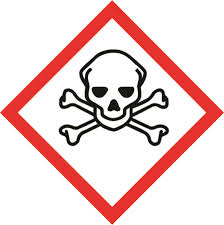What is COSHH?
What is COSHH?
“Substances hazardous to health” means any substance (including any preparation) that can be:
· Very toxic
· Toxic
· Harmful
· Corrosive
· An irritant
· Oxidising
Other hazardous substances include materials with a WEL (or any other national exposure limit, including American TLVs), dusts and fumes with no exposure limits and biological agents.
COSHH Statistics
The latest national statistics show the serious damage that can occur when substances are misused or mistreated.
· Over 13 thousand people die each year due to industrial disease caused by inhaling hazardous dusts and fumes.
· Over 3 million working days are lost through industrial disease, costing British industries 9.4 billion pounds.
Industrial diseases caused by contact with/inhaling hazardous substances include:
· Cancer
· Asthma
· Emphysema
· Dermatitis
· Chronic obstructive pulmonary disease
Classification, Labelling and Packaging (CLP) Regulation
On 1 June 2015, the government replaced the CHIP 4 classification and labelling system with the direct acting Classification, Labelling and Packaging (CLP) Regulation.
CHIP4 used the following labelling system:
· Very toxic
· Toxic
· Harmful
· Corrosive
· Irritant
· Oxidising
· Flammable
· Explosive
· Dangerous for the environment









CLP uses a new labelling system:
· Explosive
· Flammable
· Oxidising
· Corrosive
· Acute toxicity
· Hazardous to the environment
· Health hazard/Hazardous to the ozone layer
You’ll see that the old 'harmful, irritant' symbol is missing. Packaging now uses the exclamation mark pictogram:
· Serious health hazard
· Gas under pressure










COSHH Regulations
The purpose of the COSHH Regulations is to ensure that everyone who works with substances is aware of how these substances can affect health and can take action so that no-one becomes ill as a result of substance misuse.
The Globally Harmonised System of Classification and Labelling of Chemicals (GHS) has standardised the classification, packaging and labelling regulations so that hazardous substances around the world carry the same pictograms and warnings.
REACH and GHS support compliance with the COSHH Regulations.


The ETD COSHH Course
For more information on hazardous substances, you can complete. Follow these five simple steps to get started.
· Create a free company account or single user account, selecting the £12+ VAT payment scheme.
· Purchase your user accounts using the online Elavon platform.
· For company accounts, create your user accounts (using unique usernames) and “activate” each user by pressing the “activate” button.
· Purchase your online training by selecting the courses that you require. Ticking a course will instantly assign it to the user’s account.
· Once the courses have been assigned, single users can access the course under “my courses”. Company users can log into their account, go to “my courses” and start the training.
If you require any assistance with the online training, then please contact our support team[ who will be happy to help.







